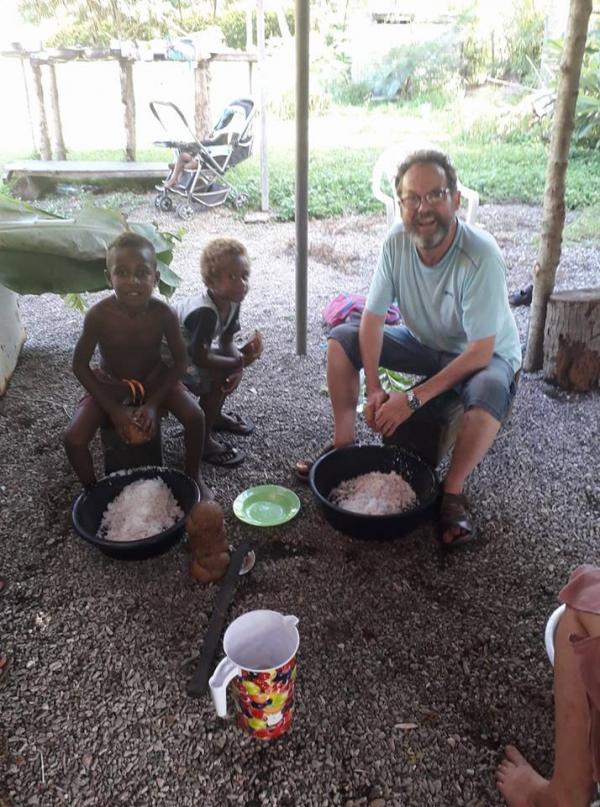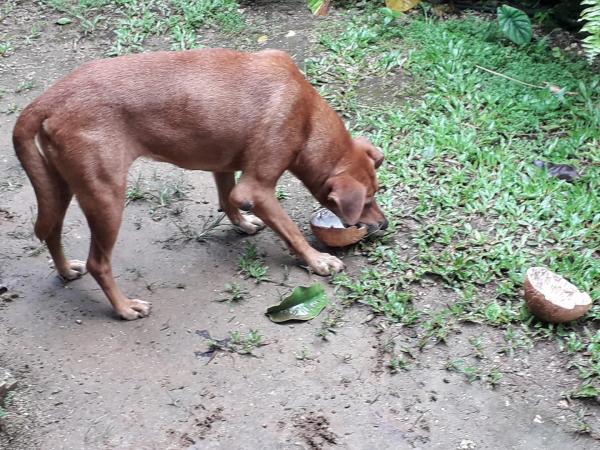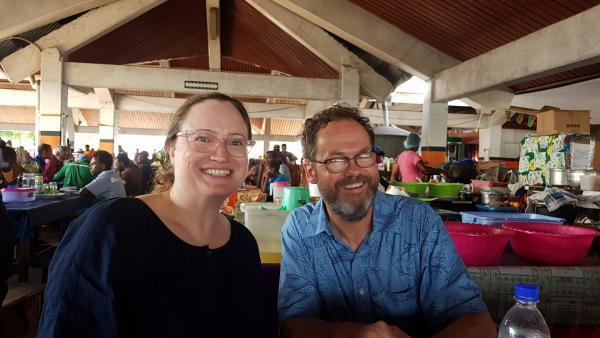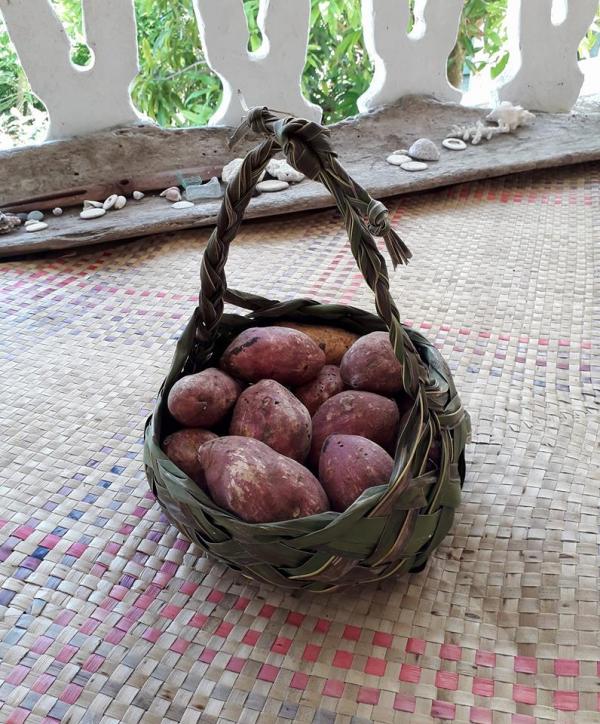16.04.2018 - Leesa Roy is accompanying her partner, Kevin McCarthy, who's on assignment as a Marketing, Communications and Fundraising Adviser with the Elwood J Euart Association in Vanuatu. They return home in January 2020.
It's a month since we arrived in Vanuatu, and what a month it's been!
We spent our first ten days in Vila on Efate, Vanuatu's main island, completing a ten-day orientation programme with Clemmie and Brigitte, VSA's 'Team Vanuatu'.
We were with two other VSA volunteers, Nicole and Carola, and two UniVol volunteers, Emily and Nadine, who we'd met at the airport before we'd left New Zealand – easy to spot in their VSA t-shirts!
The orientation programme covered a wide-range of topics about living in Vanuatu, from cyclone preparedness to personal health and safety. We also met with the other VSA volunteers currently working in Vila, and learned about the diverse work they are doing, from advising on qualifications policy, applied environmental policy, to teaching hip hop dance to local youth.
As part of our orientation we met with the New Zealand High Commissioner and staff, who talked about the work the Commission does in Vanuatu and the importance of VSA's work in achieving these goals. For example, Kevin's role as the Marketing, Communications and Fundraising Adviser for the South Pacific WWII Museum supports the Commission's goal of developing tourism on Santo.
During this time we had intensive Bislama language lessons. These helped us get out and about, going to the local market and supermarkets, taking buses, and finding our way around town. The language classes were great but it was often difficult to concentrate, as the heat is pretty exhausting, especially in the afternoons.
Towards the end of our orientation we spent two nights at a local village. This gave us the opportunity to try out our Bislama, prepare and eat Vanuatu's national dish, 'lap lap', taste kava, tour the village gardens, and learn a little about what life is like for the people living there.

Jeremy and Kevin preparing coconut during our village stay. Both had heart operation scars they proudly showed each other.
One of the key concerns for the women is access to the village. The unsealed roads have giant potholes, and trying to get to the hospital when in labour, can be very difficult, not to mention incredibly painful. While the local people are skilled at negotiating the roads, poor weather can make the bumpy trip even more hazardous and take even longer.
After our whirlwind orientation in Vila, we were up the next morning at 4am for our flight to Santo, where we will be based in Luganville for the next two years.
Our Bislama lessons continued for a few days after we arrived on Santo. This was very useful as we discovered that some of the words we learned in Vila were not really used here in Luganville. Between the islands, there is variation in the dialects, and Vila uses more anglisised words than Santo. The good news though was not that people wouldn't understand us, it's just that they'd think we're a bit odd. Given this revelation, I was simply relieved to be understood.
At the moment, our conversations tend to be in Bislama with a mixture English words and phrases thrown in. Many of the local taxi drivers have worked in New Zealand and/or Australia through the RSE (Recognised Seasonal Employer) scheme, and tell us where they've worked. We've learned about picking bananas in Australia (they have big spiders), squash and apple picking in Hawkes Bay (it's good work), as well as grape and kiwifruit cultivation down south (it's very cold).
Our apartment overlooks Segond Channel with Aore Island behind. Either side of us are the two VSA Univol volunteers who were with us in Vila, and Jackie, another VSA volunteer who is working on emergency preparedness in communities. Below us lives is a local couple who looks after the property.
There is also Roxy the house dog, well known to previous VSA volunteers for her love of coconuts. After finding Roxy covered in ticks, she now gets a weekly flea and tick shampoo – it must be quite a spectacle me chasing her around the garden while she's covered in shampoo thinking it's a great game! She has also been wormed so is full of bounce, and now receives a daily tick inspection with guaranteed tummy rubs.

Roxy, the house dog, eating coconuts.
Santo is a few degrees warmer than Efate, and adjusting to the heat has been the biggest challenge for me. Combined with the humidity, this means you can start sweating from the time you get up – if not before. Sweat drips into your eyes, runs down the backs of your legs, and best of all is the full body sweat - quite literally from head to toe.
To manage the heat, I do things in stages. Something as simple as sweeping the floors requires a break after each room to wipe my face and have a drink of water. Then when I've cooled down a little, I'll attempt the next room.

Lunch at the market in Vila. (Sweating!)
Similarly, our meals have become a lot simpler, as it's too hot to stand stirring things on the stove for long periods.
We're loving the fruit and veges here, all of which are all grown organically. The produce available is highly seasonal – suddenly there'll be an influx of passionfruit at the market, then just as quickly it's gone. At the moment giant avocadoes, which are about the equivalent of six New Zealand avocadoes in one, are available for 50 vatu (about 60 cents).
The other wonderful food discovery has been the spices, including fresh ginger and tumeric from the market, as well as limes, chilli and basil in the garden.
Kumala has become our staple vegetable – it's similar to kumara but drier in consistancy. So far we've tried three varieties, each with their own unique flavours. They come in baskets weighing about 6-8kgs – you can't buy them individually or by weight – so when you buy them you know 'kumala surprise' will on the menu for a while!
My favourite so far has been the white with purple tinges, which tastes most like the red kumara in New Zealand. This variety makes excellent kumala fritters, and bakes exceptionally well. The orange variety is excellent for mashing, and the red variety tastes like potatoes and makes good chips. I'm pretty sure I'll be able to write a book titled '101 Ways with Kumala' by the end of our stay!

Red Kumala
We know this first month has been the 'honeymoon phase' in our new home, so we're enjoying it while it lasts. Challenges lie ahead, and already we've had glimpses of what's to come. But while the excitement of the new is here, we're loving the experience.
